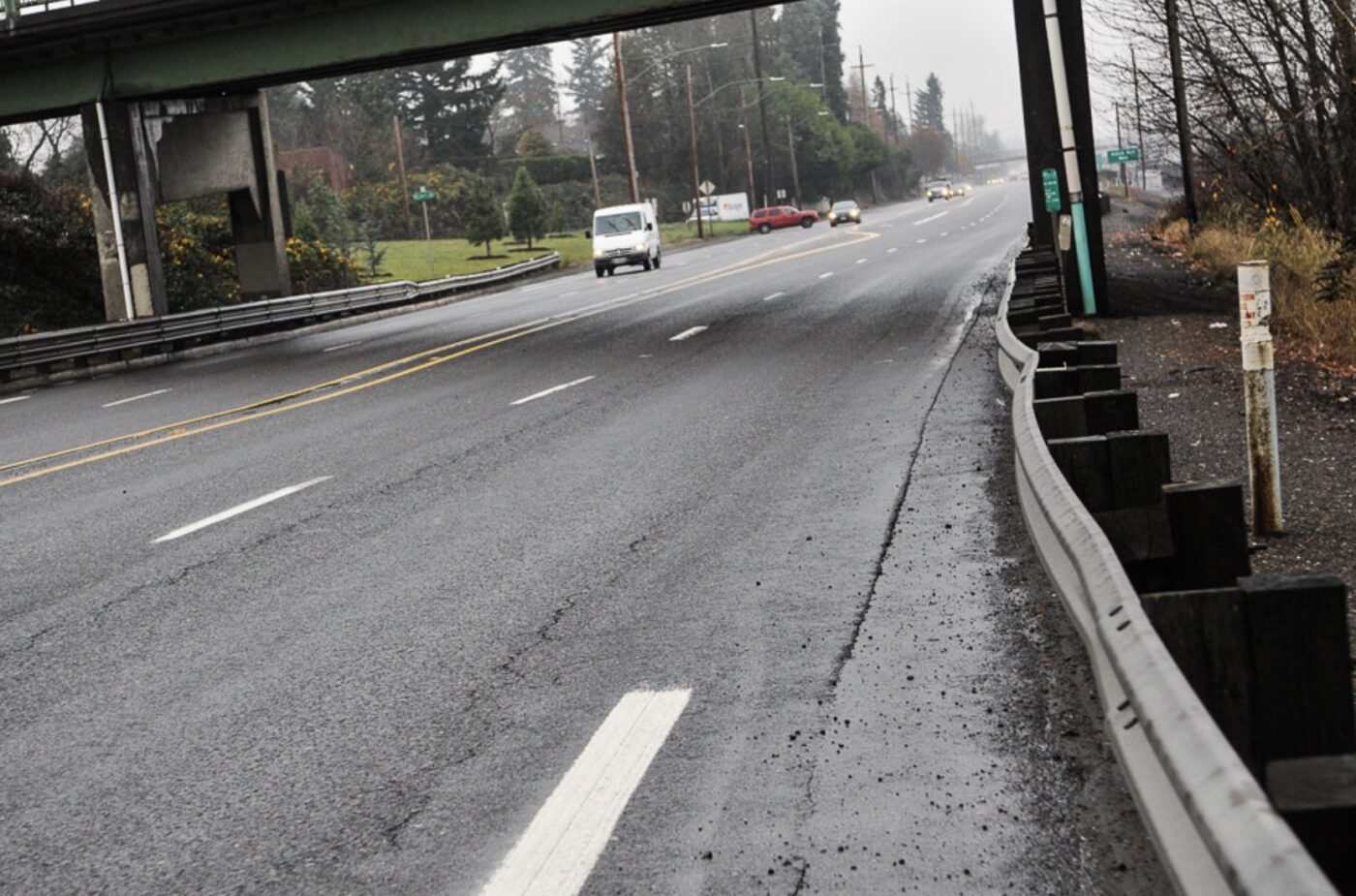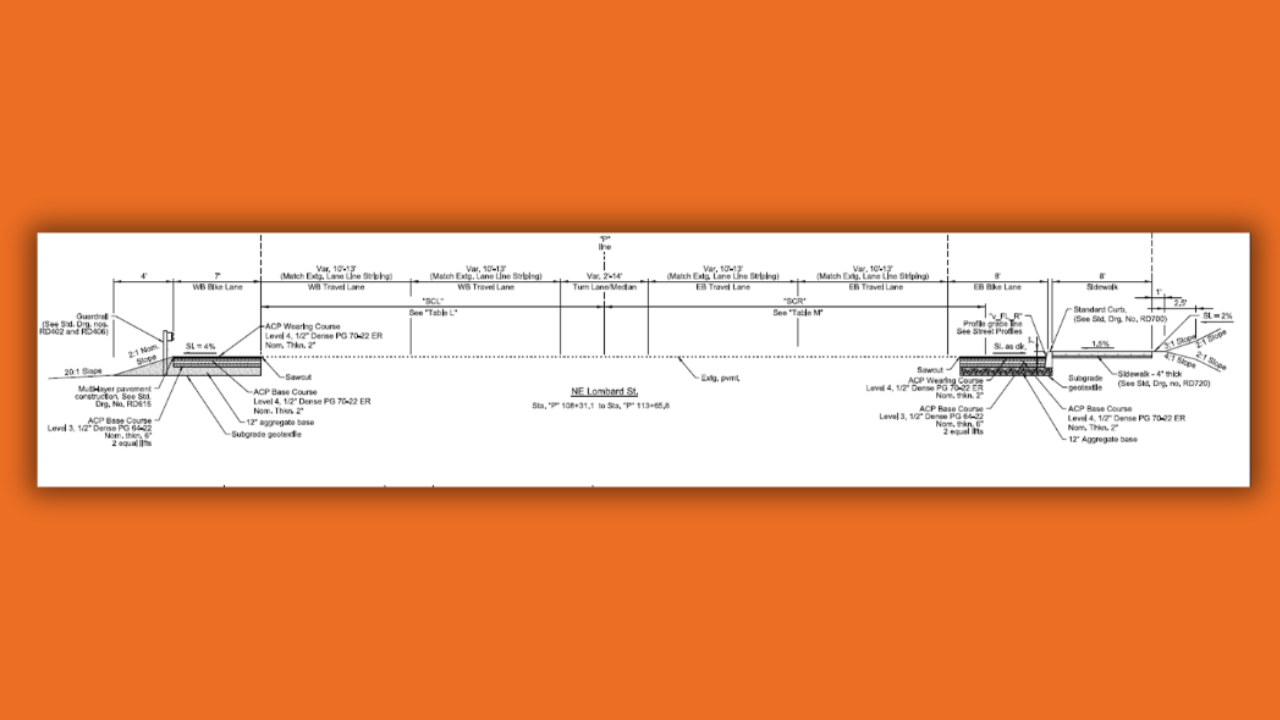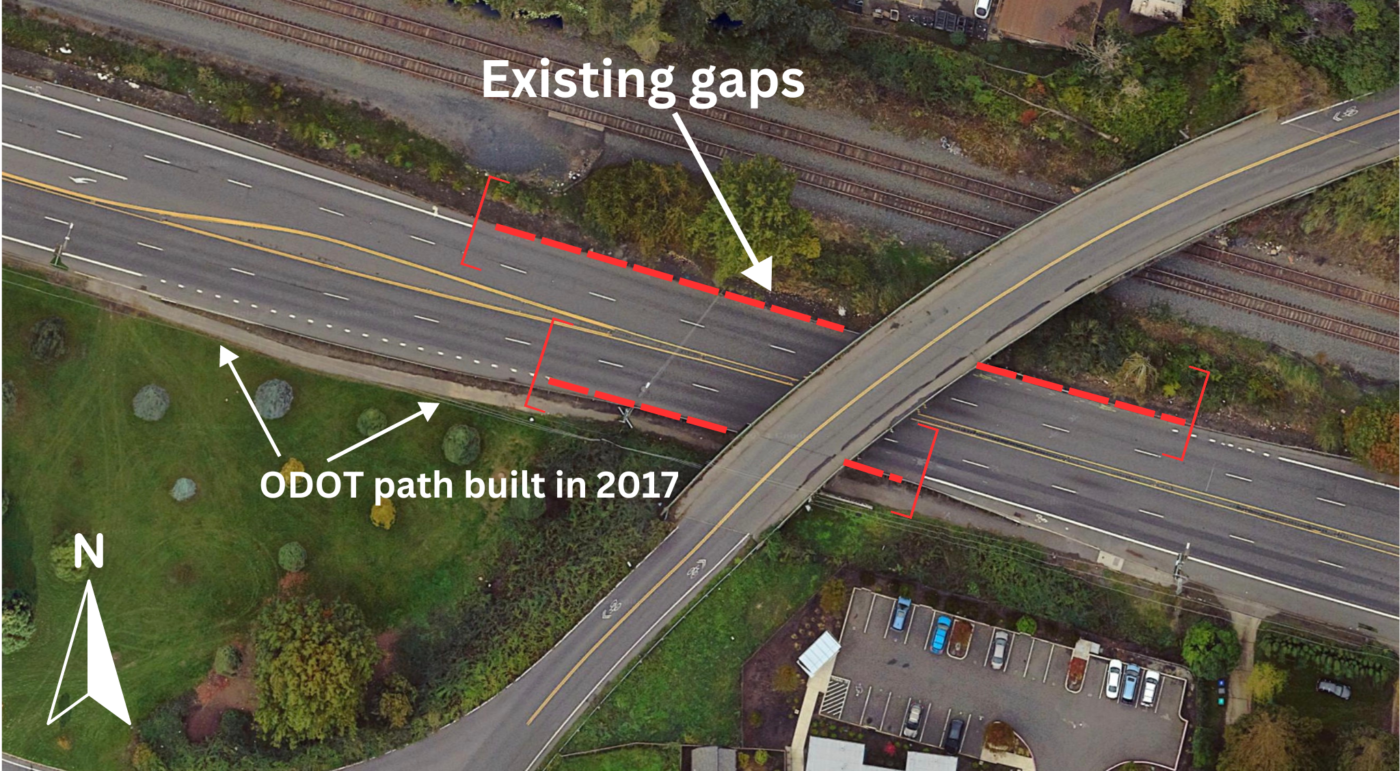When Martin Greenough was hit and killed by a car driver as he rode on Northeast Lombard Street the night of December 12th 2015, he was very likely unaware of a dangerous gap in the bike lane where the busy highway rumbles under NE 42nd Avenue. Friends told BikePortland he had just moved to town and was still experimenting with his route to work.
Now, nearly a decade after Greenough’s death, the City of Portland and Oregon Department of Transportation are ready to close that gap for good. BikePortland shared this news in 2021 (after local traffic safety activist and lawyer Scott Kocher told us about it) and the agreement between the city and state was finalized last year.
A Portland Bureau of Transportation project manager told members of the city’s freight committee at their monthly meeting last week that they’ve received funding from ODOT (who owns and manages Lombard since it’s also Highway 30) to widen the road and build a continuous bike lane in both directions. The PBOT staffer referred to this as a “vital safety improvement.”
The work is part of PBOT’s project to replace the 42nd Avenue bridge later this fall.
PBOT Public Information Officer Dylan Rivera has confirmed they will stripe a seven-foot wide bike lane in the westbound direction and an eight-foot bike lane eastbound. Rivera says ODOT gave PBOT $587,000 to build the new bike lanes. The lanes will have a paint-only buffer stripe. The schematic plans shared by Rivera (above) also show an eight-foot sidewalk on the south side (eastbound) of the street. I assume this will take the place of the existing bike path, but I still need to confirm that.
In 2017 the city and state settled a lawsuit with Greenough’s family over the design of the roadway. At that time, ODOT opted to pave a bike path in the eastbound direction, instead of closing the bike lane gap.
The Greenough tragedy pressured the City of Portland to edit their official bike map to reflect the dangerous gap. Once the new bike lanes are in place, they’ll have another change to make to the map. Whether an unprotected bike lane on an urban highway with a 45 mph speed limit merits removal of “caution” markings will be up to PBOT.



